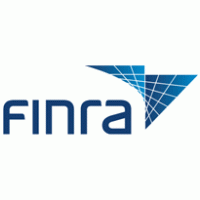FINRA publishes regulatory priorities for 2018
Chris Hamblin, Editor, London, 22 January 2018

In its latest list of so-called examination priorities, the US Financial Industry Regulatory Authority looks forward to more activity in the fields of suitability, best execution, market surveillance and financial crime. This article summarises its concerns.
In the past year, FINRA referred hundreds of cases of potential insider trading and other fraudulent activities involving firms outside its jurisdiction to Securities and Exchange Commission. It also passed a new rule, no 2165, and its old rule 4512 in this area. In the coming year it intends to concentrate on the investigation of microcap fraud scams, particularly when brokers show a new or sudden interest in buying microcap stocks for their own accounts or those of their customers.
FINRA Rule 2165 will become effective on 5th February and will allow regulated firms to place temporary holds on disbursements of funds or securities from the accounts of specified customers where there is a reasonable belief of financial exploitation of these customers. The protection of vulnerable HNW adults is a priority here.
On 14th May, amendments to FINRA Rule 2232 (to do with 'customer confirmations') will require each firm to disclose the amount of mark-up or mark-down it applies to trades with retail customers in corporate or agency debt securities if it also executes offsetting principal trades in the same security on the same trading day. It will also require firms to disclose two additional items on all retail customer confirmations for corporate and agency debt security trades: (a) a reference, and a hyperlink if the confirmation is electronic, to a web page hosted by FINRA that contains publicly available trading data for the specific security that was traded; and (b) the execution time of the transaction to the nearest second.
The protection of customers' assets and the accuracy of firms’ financial data are perennial priorities for FINRA’s examiners (people who go on regulatory visits). In the next year, according to its list of priorities, the regulator intends to review the processes by which firms verify the existence of customers' assets and proprietary assets and liabilities in those financial records. It may also contact appropriate entities, such as custodial banks, to assess the validity of reported positions. It will review situations where registered representatives have control of investors’ finances as power-of-attorney or trustee on customer accounts, or have future rights to customer assets as a named beneficiary on customer accounts. It may also look at their underlying arrangements with foreign custodians to find out whether they permit cross-liens or use temporary holding accounts. When firms hold customers' securities in temporary holding accounts, or move them through such accounts, it will try to work out whether these accounts are good 'control locations.'
The regulator's Cross Market Auction Ramping surveillance pattern began operations in August last year, using machine-learning techniques to identify "aggressive and dominant trading surrounding the open or close." This year it is working on the use of machine learning techniques to detect manipulative layering activity.
On the anti-money-laundering front, FINRA has noticed that some firms do not monitor accounts opened for affiliates well or at all. It is worried that firms' AML surveillance efforts do not cover accounts used in connection with securities-backed lines of credit or aggregate activity across accounts when they use multiple accounts to receive and disburse funds in connection with such lines of credit. It wants them to 'confirm' that they do, presumably in writing to its office. Its aim is to conduct a comprehensive review of firms’ sales practices and operations in this area to see if they are complying with its rules.
'Suitability' (of advice and trading activity to suit the customer's best interests) is always a top priority for the regulator and this year it is worried about the fact that firms are having trouble imposing effective controls on the process, not least when they handle Unit Investment Trusts (UITs) and multi-share class products. It is also going to be on the look-out for recommendations that result in undue concentration in securities positions, including recommendations that result in concentrated positions in interest-rate-sensitive instruments or recommendations that result in the short-term trading of products typically intended to be held on a long-term basis.
'Best execution' is another important prong to the regulator's effort to protect investors from sharp practice and/or the consequences of their own lack of wisdom. FINRA is beefing up surveillance in this area and intends eventually to conduct a systematic review of the frequency of price improvement (a situation in which a market maker fills an order at a better price than the National Best Bid and Offer).
FINRA is consolidating its enforcement functions into a single unit. Unlike other regulators around the world, led by the British, it does not intend to relax the rules for new 'fintech' ventures in a controlled way with a so-called 'sandbox.' Instead, it is contenting itself with an outreach initiative and has compiled a directory of compliance software vendors for regulated firms to peruse. It is planning to train examiners (whose inabilities are always a bugbear for US financial firms) to a higher standard.
In its priority document FINRA also congratulates itself for curbing the incidence of 'layering' — a manipulative trading strategy — in the last year. It attributes this to the introduction of its cross-market surveillance report cards in 2016.












